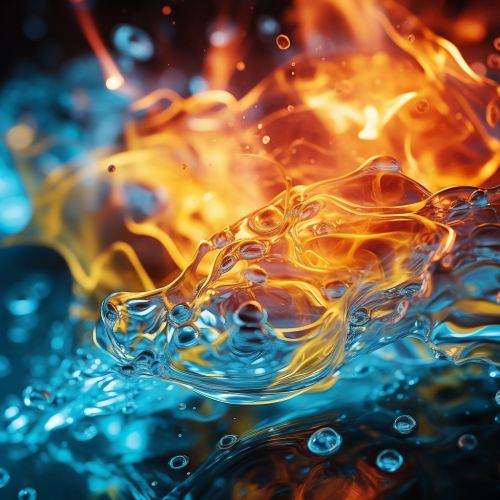Oxidizing agent
Definition and Overview
An oxidizing agent (also known as an oxidant or oxidizer) is a substance that has the ability to oxidize other substances — in other words, to cause them to lose electrons. Oxidizing agents are key players in many chemical reactions, particularly those in the field of inorganic chemistry and organic chemistry. They play a vital role in many natural processes, such as respiration and photosynthesis, as well as in a wide range of industrial processes, from water treatment to rocket propulsion.


Characteristics of Oxidizing Agents
Oxidizing agents are characterized by their ability to accept electrons. This property is quantified by their oxidation state or oxidation number. The higher the oxidation state, the greater the substance's ability to accept electrons and, therefore, to act as an oxidizing agent. Oxidizing agents can be elements, ions, or molecules, and they can exist in all three states of matter: solid, liquid, and gas.
Common Examples of Oxidizing Agents
Some of the most common examples of oxidizing agents include oxygen, hydrogen peroxide, and the halogens. Oxygen (O2) is perhaps the most well-known oxidizing agent. It is involved in combustion reactions, such as the burning of gasoline in a car engine. Hydrogen peroxide (H2O2) is another common oxidizing agent that is often used in cleaning and disinfection. The halogens (fluorine, chlorine, bromine, iodine, and astatine) are also potent oxidizing agents, with fluorine being the most powerful.
Role in Chemical Reactions
In a chemical reaction, the oxidizing agent is responsible for removing electrons from another substance, a process known as oxidation. This is always accompanied by a reduction reaction, in which another substance gains the electrons that were lost in the oxidation reaction. Together, these two reactions make up an oxidation-reduction (or redox) reaction. The substance that loses electrons is said to be oxidized, while the substance that gains electrons is said to be reduced. The oxidizing agent, therefore, is reduced in the process, while the substance that is oxidized acts as the reducing agent.
Applications of Oxidizing Agents
Oxidizing agents have a wide range of applications in both natural processes and human-made systems. In the human body, for example, oxygen acts as an oxidizing agent in the process of cellular respiration, where it helps to break down glucose and other nutrients to produce energy. In the environment, oxidizing agents play a crucial role in the breakdown of organic matter and the cycling of nutrients.
In industry, oxidizing agents are used in a variety of processes. They are used in water and wastewater treatment to remove impurities and kill bacteria. They are also used in the production of a wide range of chemicals, including plastics, resins, and pharmaceuticals. Additionally, oxidizing agents are used in rocket propellants, explosives, and fireworks, where they provide the oxygen needed for combustion.
Safety Considerations
Due to their ability to accept electrons and undergo reactions, oxidizing agents can be hazardous. They can cause fires and explosions if not handled properly. Some oxidizing agents, such as chlorine and bromine, are also toxic and can cause harm to human health if inhaled, ingested, or come into contact with the skin. Therefore, it is important to handle oxidizing agents with care and to follow all safety guidelines when using them.
